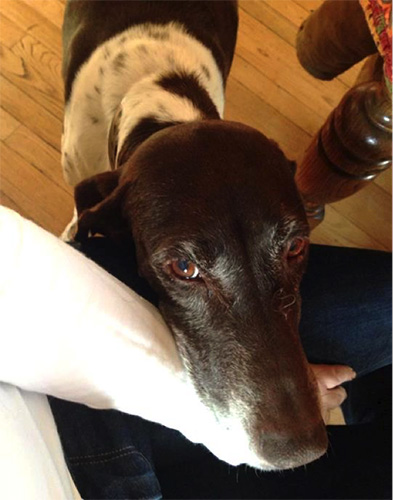Composition tools for taking photographs – Part 1
A few basic photography composition techniques and tools to help your youth photovoice participant share their story in the most effective way possible.

In "So you want to take a selfie? Use photovoice to tell your story," we outlined a basic process for the facilitation of a photovoice project. Photography is growing in accessibility as a form of creative expression. Photovoice takes it one step further, using photography as a form of storytelling, empowerment and even to ignite community change.
In the photovoice process, start out with the time old adage, "A picture is worth 1,000 words." Ask your youth participants to fill in the number for you, and then help them visualize what 1,000 words looks like by either printing 1,000 words out (the body of this article is 541 words) or have them guess how many pages 1,000 words fits on (using 12 point, Arial font, 1,000 words is about two pages). That is a lot of words shared through one photograph, and that is one of the reasons why photovoice is so effective. Using pictures to represent an individual's perspective and the strengths and opportunities they see in their community is very powerful.
Photography, just like all other forms of art or creative expression, is subjective. This article isn't meant to outline how to take a "good" picture or a "beautiful" picture, because what is good and beautiful is different for each person. Instead, this article is meant to outline three tools participants can utilize to best tell their story with photographs.
- Point of view. Considering and capturing multiple points of view, such as how a worm or bird in the sky might view a place or object, can help capture audience attention and help them see something in a way they never considered prior.
- Light. Most picture taking devices are equipped with a flash and sometimes even flash automatically. This doesn't mean that using a flash is always the best option. Consider the natural light and what the subject of the picture is. If you're trying to capture tiny details or it’s very sunny and you don't want shadows cast on a person's face, using a flash is a great choice. Otherwise, turn the flash off and let the natural light add some context to the setting of your photograph.
- Line and pattern. Looking for a way to incorporate line or pattern can help add visual interest to your photograph. Lines, whether they're natural like a row of trees or manmade like a road or fence, can help direct the person looking at your picture from one side of the frame to the other. Pattern can help contribute a 3D-like feel to a photograph, making it seem real rather than a moment captured somewhere else.

This photograph is an example of one taken from a different point of view (bird’s eye view).

Natural light give this example an ominous feeling, while not using a flash allowed the photographer to capture more detail in the background on a dark night.
Slowing down to be intentional and thoughtful of the intended story will help youth participants use these basic photography skills to their advantage. Photovoice also helps youth cultivate many other skills. Check out the additional articles in this series listed below that outline visual literacy activities and reflective writing.
Michigan State University Extension and the Michigan 4-H Youth Development program helps to prepare youth as positive and engaged leaders and global citizens by providing educational experiences and resources for youth interested in developing knowledge and skills in these areas. To learn about the positive impact of Michigan 4-H youth leadership, civic engagement, citizenship and global/cultural programs, read our 2015 Impact Report: “Developing Civically Engaged Leaders.”
Other articles in series
- So you want to take a selfie? Use photovoice to tell your story
- Composition tools for taking photographs – Part 2
- Visual literacy: A place to start when writing about your photovoice or photography project
- Reflective writing in photovoice: Why writing about your visual story is important
- Extra! Extra! See all about it! Concluding photovoice with a community showcase



 Print
Print Email
Email



